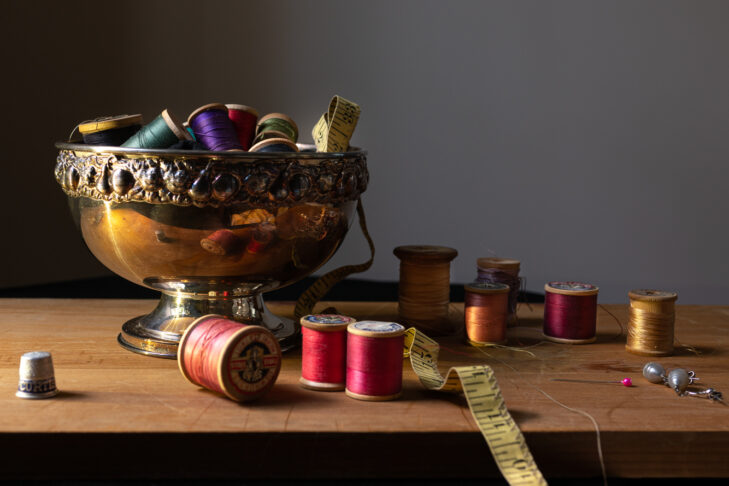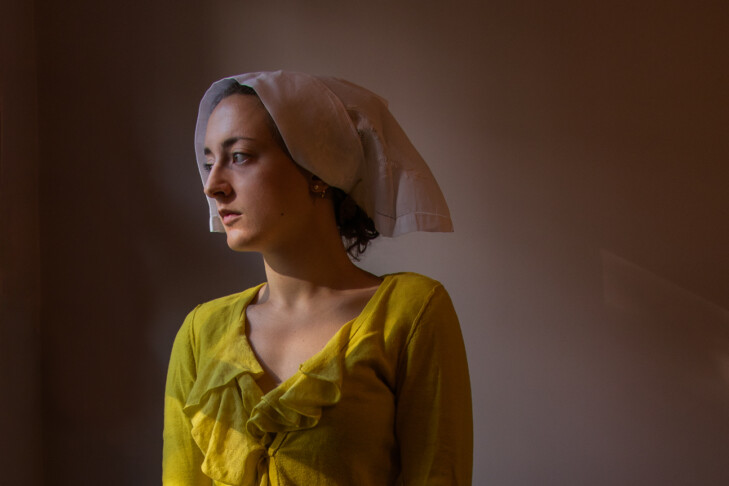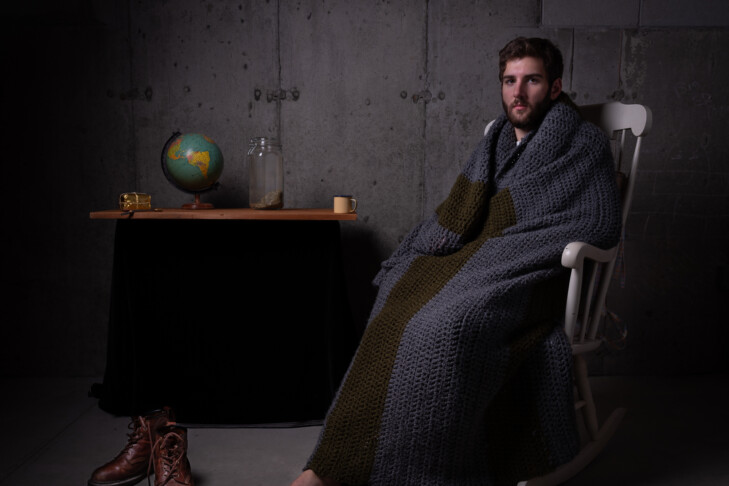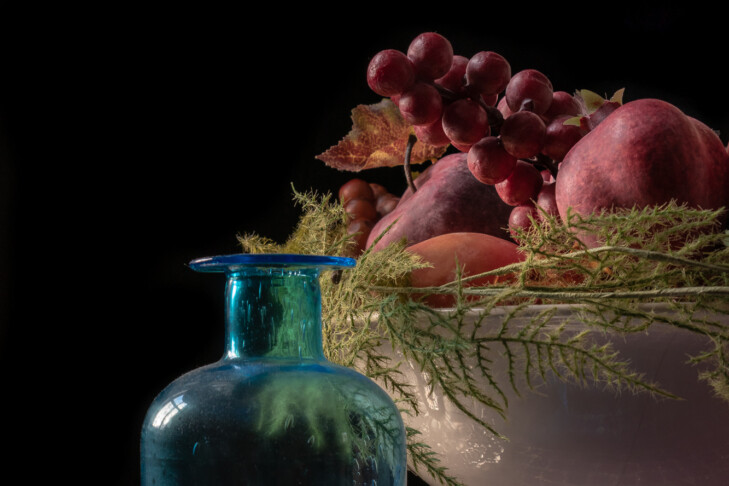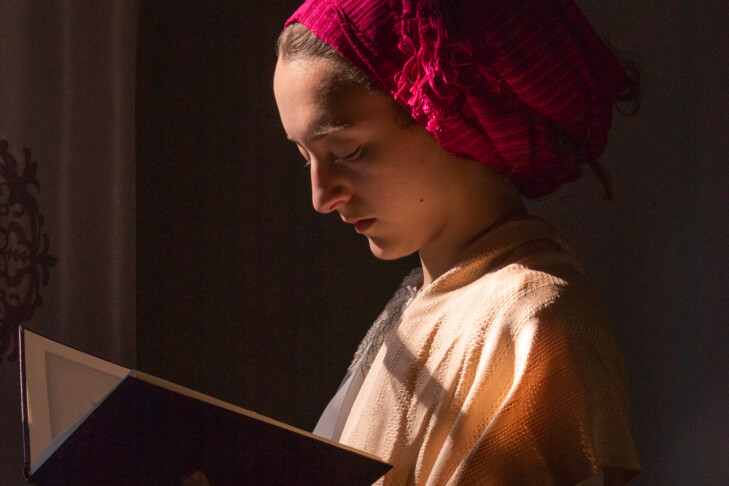Almost a hundred years ago, Virginia Woolf wrote “A Room of One’s Own,” in which she boldly asserted that “a woman must have money and a room of her own if she is to write fiction.” That vision of emotional and artistic independence has been a North Star for many women writers and artists. Becky Behar, a photographer based in Newton, has created a darkroom of her own. Her photography brilliantly reflects the two decades she dedicated to raising her three children. Her 24-year-old daughter serves as her primary model, and she also features her sons, who are 19 and 21, in her work.
Behar was born in Bogota, Colombia, and immigrated to Miami when she was 7. Photography has always been her passion. She recalls learning her art with pinhole cameras and black-and-white darkroom techniques that she applied to edit her high school yearbook. She continued studying photography at Wellesley College with her mentor Judith Black. Black’s work, which consisted of informal black-and-white pictures of her family, would eventually influence Behar’s images. “Back then,” Behar told JewishBoston, “I didn’t completely understand the importance of [Judith’s] work. It wasn’t until I returned to photography that I realized what she did was momentous. Her work was unique for the way she simply took everyday pictures of her family.”
Behar put her photography aside when she had her three children and became immersed in running a busy household. However, five years ago, Behar was on the cusp of becoming an empty-nester and realized it was time to invest in herself. As she and her husband were looking to add to their art collection, they met Toni Pepe, a photographer whose work they admired. Behar told Pepe that she had studied photography. What happened next was serendipitous. “Toni told me to take classes at the Griffin Museum of Photography in Winchester, and that was the beginning,” she said. “The Griffin became a place where I cultivated my vision. I started to honor my time as a mother who had not worked outside the home with my photography.”
In describing Behar’s artistic reawakening in terms of photographic language, it has been ongoing, like a developing image. These days, her work is digital, and she is meticulous about printing her pictures. “I think it’s important to do my own printing because I learn a lot more about how I want to present my images,” she said. “Do I choose a glossy paper? Do I choose a matte paper? Different papers show up differently. Some papers bring out more green tones, some more blue tones. It’s really learning not just about the paper, but how I want to show my image and what I want to see.”
Behar’s photographs are deliberately fashioned images, many of which highlight her daughter as her muse, and are inspired by 17th-century Dutch painters, particularly Vermeer. The results are exquisite portraits and still lifes that Behar said reflect her family life and her motherhood. In many of the photographs, Behar’s daughter is wearing her mother’s clothing, the symbolism of which Behar said “is imbuing the character traits that I hope I’ve passed on to my daughter. It’s also the transformation of me trying to understand who she is as an adult.”
In her first solo show, “Seeing Me, Seeing You,” last winter at the Griffin Museum of Photography in Boston’s South End, Behar noted that she was invoking the Jewish idea of l’dor v’dor—“from generation to generation.” The theme has been further brought out in the ongoing artistic collaboration she has forged with her children in creating her photographs. “My children understand what I’m doing artistically and work with me on these images,” she said. “All of my work is the collaboration between the subject, or the model, and me. The camera is what matters least at that moment of working together. It’s a meditative dialogue to work with my daughter. We’re very quiet when I’m photographing and she’s modeling. She’s purposely not posing.”
Behar’s work is also notably organic. None of the clothing or objects was specifically purchased for the photographs. Everything was already in her home or the homes of family and friends. Many of the items are common things like spools of thread, aprons or tablecloths. “The idea is to romanticize these objects and make them beautiful,” she said.
Water also figures in her still lifes. “I often have some kind of vessel that holds water in my photographs,” she said. “That signifies my role as a mother, my role as the carrier, as somebody who has nourished others. Everything in my images has a metaphor.”
Behar’s newest work comes together in a series she calls “Homespun.” Those images allude to the Yiddish adage, “Man plans and God laughs.” Behar said she wants to convey that one can plan, but ultimately things are out of our control. Her role as a mother is again at the forefront, but Behar also explores the pandemic’s effects in her new work. The images show life at home with her three young adult children. “I’ve constructed images that bring up a bit of trauma and confinement,” she said. “They encourage conversations about the psychological and physical states in which we find ourselves in this and other times. I want to talk about our hopes, our fears and the lives we knit together.” In one image, Behar photographs her younger son wrapped in a blanket that he knitted.
Behar noted that resuming her career in photography was, among many things, a 50th birthday goal for herself. To that end, she embeds the subtle metaphors of aging in her work. “I’m making the colors vivid in these images, yet at the same time, there is some withering happening,” she said. “That points to me. I’m maturing, but there’s still a lot of vibrancy left in me. I still have so many things to do with my life.”
Becky Behar’s photography is currently on display in a solo exhibit at Workspace Gallery in Lincoln, Nebraska. She is also among the featured artists this month at Area Code Art Fair. Learn more at beckybehar.com.



